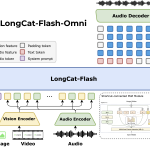Fine-Tuning Open Video Generators for Cinematic Scene Synthesis: A Small-Data Pipeline with LoRA and Wan2.1 I2V
PositiveArtificial Intelligence
A new pipeline has been developed for fine-tuning open-source video diffusion transformers, allowing for the synthesis of cinematic scenes from small datasets. This innovative two-stage process separates visual style learning from motion generation, enhancing the capabilities of the Wan2.1 I2V-14B model. By integrating Low-Rank Adaptation (LoRA) modules, this approach not only improves visual representation but also streamlines production for television and film. This advancement is significant as it opens up new possibilities for creators working with limited data, making high-quality video production more accessible.
— Curated by the World Pulse Now AI Editorial System



